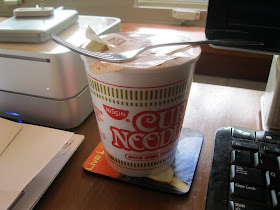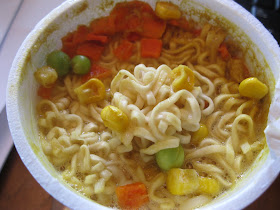 |
| WE WENT TO BALTIMORE, Y'ALL! |
Way back in May of 2012, Lexi took me on a
cross-country trip to Baltimore and DC to visit her very favorite seafood restaurant in the whole of everywhere. The trip was a decade in the making, and was so full of fun, fury, and food that it's taken until now to do a write-up about it. (I'm still having dreams about casts of blue crabs coated in Old Bay, swimming in butter and beer... mmmmm.....)
Part of Lexi's motive for the trip was to compare East Coast vs. West Coast seafoods. Both of us were raised in the shadow of Mt. Rainier on the gray rocky shores of Puget Sound. Its cold, salty waters yield up a massive bounty of delicious things to eat - foods that are not simply part of our diet, but have been part of our lives as locals.
Hunting and harvesting seafood are more than just fun activities, they're full-blown events that we've taken part in since we were kids: trips to the coast to dig for razor clams in January, putting out the crab pots during Dungeness season in the summer, grilling oysters and steaming mussels a yard from the beach where they were collected, all of these things and more form fond memories for both of us. (One of the most useful skills my dad taught me was
how to shuck an oyster.) That doesn't even start to touch on the other culinary delights found in and around the greater Puget Sound area, brought by the influx of cultures from all around the Pacific Rim: salmon caught and smoked by indigenous people, fish stews and soups from Korea and Thailand, a gazillion kinds of sushi, Chinese fish hot pots, even the fish tacos that wandered up from the coast of California... you love seafood? We got it.
We got it... but West Coast style seafood ain't the same as East Coast style. I knew this, but Lexi (having traveled considerably more than I have) had actually experienced it. So to broaden my tastes, she took me eastward. The destination: Baltimore (and areas surrounding), where her favorite restaurant in the world is located:
Anne Arundel Seafood.
This is the story of how we got there, and all the yummy things we ate on the way.
Day One
I hate flying. It doesn't frighten me or freak me out, it's just kind of uncomfortable, being stuffed into an aluminum can with a bunch of often grumpy strangers in narrow seats with no leg room, too much dry air, and not enough in the way of little creature comforts to make the whole thing a bit more bearable.
Fortunately, at the time we took the trip, Lexi had been traveling a lot for business, and had amassed enough frequent flyer points to get us upgrades into First Class. (SWEET.) The cabin steward was friendly, the seats were wide enough (and comfy), and at least some of the drinks were free. We played Ticket to Ride and chilled out for 5 hours, landing uneventfully in Washington, DC, as evening fell.
 |
| Thank you, friendly cabin steward, for the stiffest Bloody Mary to be found at 35,000 feet. |
Of course we landed hungry, so after collecting our bags and rental car, and checking into our hotel in DC, we set out with Lexi at the wheel to find some late-night noshies.
Just off Dupont Circle, we found
Kramerbooks & Afterwords Cafe.
 |
| Books & booze at Kramerbooks & Afterwords Cafe |
It's a used bookstore. With a bar. And a late-night cafe. Perfect for two hungry geeks on the prowl for something yummy. We ordered drinks - Lexi got the Stormy Weather, I got a Dark & Stormy. The rum was just right and they made it with a basil garnish, which was a nice touch. Then of course we dove right into the seafood.
 |
| East Coast crab cake appetizer with remoulade |
First up was a round of mini East Coast crab cakes, made with lump crab and served with a remoulade. I'm a stickler about my crab cakes: I judge them in large part by how much crab there is to how much "cake" - that is, how much of it is actually crab meat, and how much is filler or binder? Some time before this trip, I'd joined Lexi on a short jaunt to Cape Cod, where she spoiled me and our hosts with a round of thick, delicious Maryland-style cakes from one of her favorite restaurants. I recalled those creamy, piping hot roasted cakes so full of crab they barely held together, and wondered: could Kramerbooks' cakes compare?
I'm happy to say that Kramerbooks' crab cakes were more crab than cake. Fried in butter rather than roasted, they had a rich, crisp exterior. Compared to the sweet-fleshed Dungeness of my home state, the blue crab in these cakes was less sweet and considerably meatier, well-balanced by the sweet-sour taste of the remoulade.
 |
| Mussels steamed with shallots, garlic, white wine, butter, basil |
Next, we tried the steamed mussels. The preparation was pretty traditional: steamed in white wine with butter, shallots, garlic, and fresh basil. One of the reasons I wanted to try them was because of the fact that shellfish can taste radically different from one location to another, even when they're the same species. (I've noted this with local oysters in particular, which can vary in taste depending on waves, weather, content of the water, season of the year, and so on, even when harvested from the same beach.) These were blue mussels, farmed locally, the same species we eat on summer beach trips here in Puget Sound, so while the basic flavors were very similar, the brackish, slightly muddier local waters imparted a sweeter taste with less of an iodine note than mussels from the waters at home. Quite delicious, meaty and sweet as only mussels are, and the fresh basil added a nice almost floral touch.
 |
| Catfish fingers with Cajun spices & Cajun remoulade |
Then it was on to the fried catfish fingers. Catfish isn't something we get very often back home, since it's not a local delicacy; it's much more something we used to eat when visiting my Southern relatives. To me it always has a slightly muddy taste, a bit like river water - perhaps not surprising, since catfish are river-dwelling bottom feeders. Nonetheless, they're delicious. As I recall, the catfish fingers were pretty good, but a bit greasy despite being cooked in olive oil (rather than, say, deep fried in lard). I kind of expected the cornflake crust to be crispier than it was.
This is how I ended the evening:
 |
| Original Sin Cherry Tree Hard Cider |
Yup, at the bottom of a pint mug of
Cherry Tree Hard Cider from Original Sin. Even under the sallow yellow light of a sodium street lamp, this cider was a lovely, clear red. Made with heirloom apples and tart cherries, it was like a tart apple-cherry pie, crisp and fruity, just sweet enough and just sour enough. Delightfully, while the flavors of a traditional apple cider were strong, the cherries were just as bold, and they actually tasted like real cherries, not like some fake weird cherry syrup. Yum!
I don't even remember if we had dessert. I just remember that, after a long day of travel, it was great to sit outside on a semi-warm East Coast evening, under a warming heat lamp, eating the first of many fishy dishes to come. Kramerbooks comes highly recommended by the FeastyGeeks, if ever you're in DC.
Next time: Day Two, in Which Two Hungry Foodie Geeks Seek Out Breakfast










































